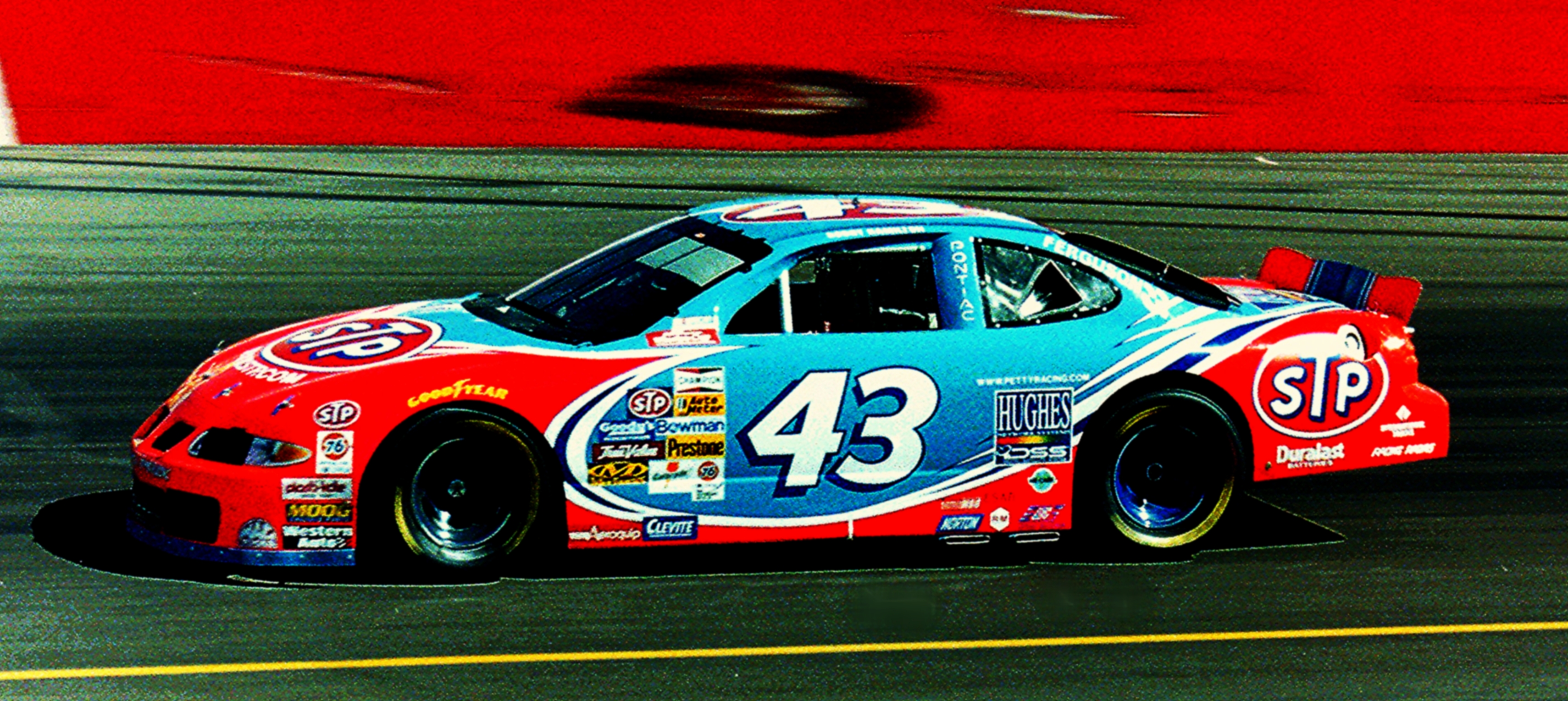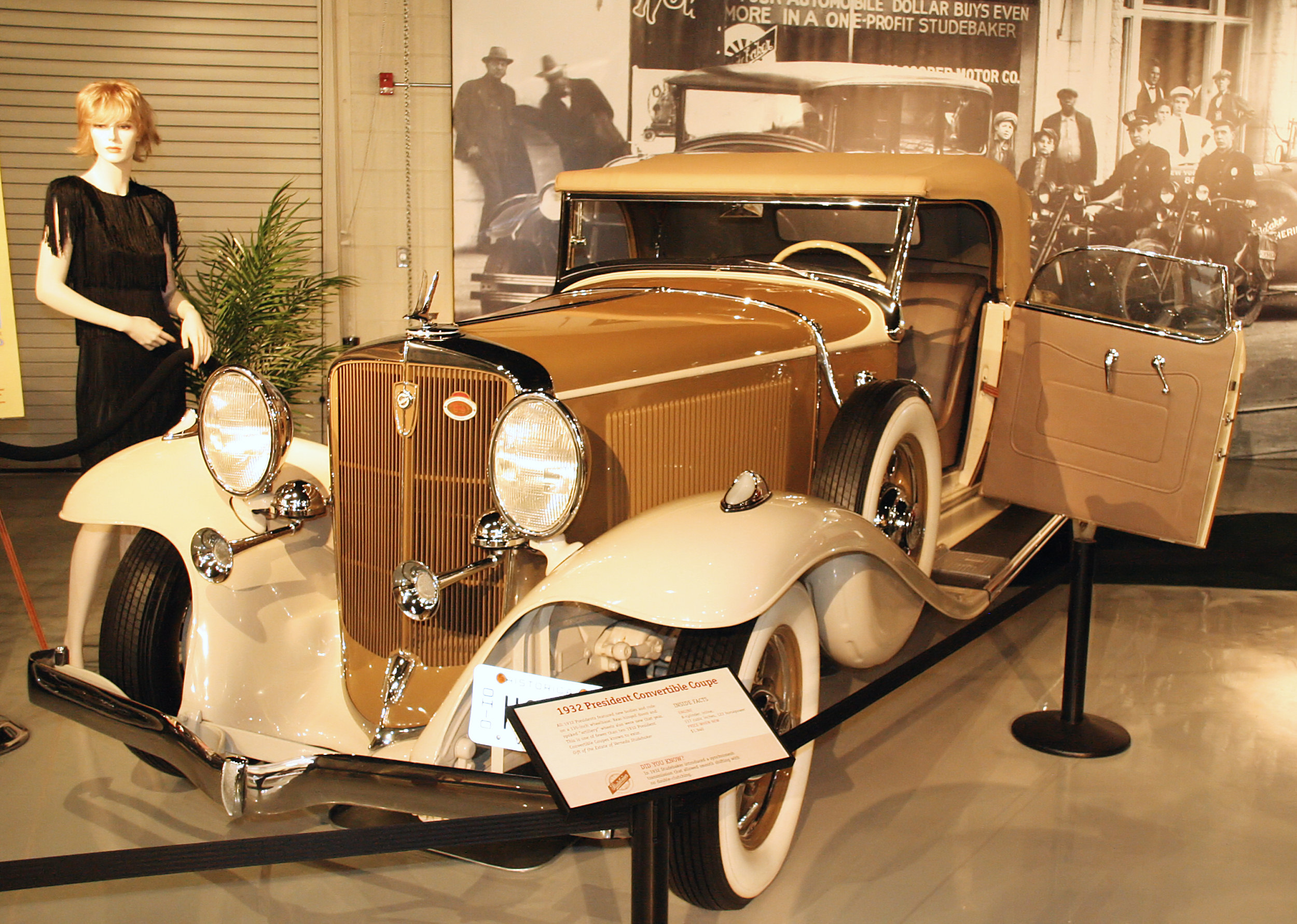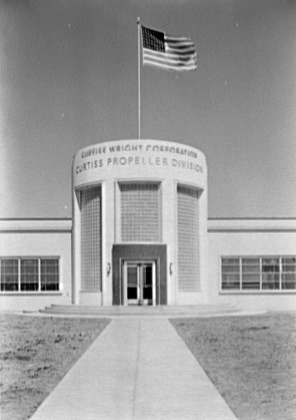|
Studebaker-Packard
The Studebaker-Packard Corporation was the entity created in 1954 by the purchase of the Studebaker Corporation of South Bend, Indiana, by the Packard Motor Car Company of Detroit, Michigan. While Studebaker was the larger of the two companies, Packard's balance sheet and executive team were stronger than that of the South Bend company. In the spring of 1962, Studebaker-Packard reverted its name to "Studebaker Corporation". The following year, the South Bend plant was closed, while its Canadian plant in Hamilton, Ontario, continued to produce Studebaker cars until 1966. The South Bend plant would later be acquired by the Avanti Motor Company. Studebaker Corp. merged with Worthington Corporation one year later. Studebaker-Worthington was a diversified American manufacturer operating the various business units of Studebaker, Wagner Electric and Worthington Corporation. The company was in turn acquired by McGraw-Edison in 1979. Purposes of merger It was hoped that Packard would be ... [...More Info...] [...Related Items...] OR: [Wikipedia] [Google] [Baidu] |
Packard
Packard or Packard Motor Car Company was an American luxury automobile company located in Detroit, Michigan. The first Packard automobiles were produced in 1899, and the last Packards were built in South Bend, Indiana in 1958. One of the "Three Ps" alongside Peerless Motor Company, and Pierce-Arrowthe company was known for building high-quality luxury automobiles before World War II. Owning a Packard was considered prestigious, and surviving examples are found in museums, car shows, and automobile collections. Packard vehicles featured innovations, including the modern steering wheel, air-conditioning in a passenger car, and one of the first production 12-cylinder engines, adapted from developing the Liberty L-12 engine used during World War I to power warplanes. During World War II, Packard produced 55,523 units of the two-stage/two-speed supercharger equipped Merlin V-12s engines under contract with Rolls-Royce. Packard also made the versions of the Liberty L-12 V-12 ... [...More Info...] [...Related Items...] OR: [Wikipedia] [Google] [Baidu] |
Studebaker
Studebaker was an American wagon and automobile manufacturer based in South Bend, Indiana, with a building at 1600 Broadway, Times Square, Midtown Manhattan, New York City. Founded in 1852 and incorporated in 1868 as the Studebaker Brothers Manufacturing Company, the firm was originally a coachbuilder, manufacturing wagons, buggies, carriages and harnesses. Studebaker entered the automotive business in 1902 with electric vehicles and in 1904 with gasoline vehicles, all sold under the name "Studebaker Automobile Company". Until 1911, its automotive division operated in partnership with the Garford Company of Elyria, Ohio, and after 1909 with the E-M-F Company and with the Flanders Automobile Company. The first gasoline automobiles to be fully manufactured by Studebaker were marketed in August 1912. Over the next 50 years, the company established a reputation for quality, durability and reliability. After an unsuccessful 1954 merger with Packard (the Studebaker-Packard C ... [...More Info...] [...Related Items...] OR: [Wikipedia] [Google] [Baidu] |
Packard Clipper
The Packard Clipper is an automobile which was built by the Packard Motor Car Company (and by the later Studebaker-Packard Corporation) for model years 1941–1942, 1946–1947 and 1953–1957. For 1956 only, Clipper was classified as a stand-alone marque. The Clipper was introduced in April 1941, as a mid-model year entry. It was available only as a four-door sedan. The Clipper name was re-introduced in 1953, for the automaker's lowest-priced line up. By 1955, the Clipper models were seen as diluting Packard's marketing as a luxury automobile marque. It was named for a type of sailing ship, called a clipper. For only the 1956 model year, the Clipper became a stand-alone make of automobile produced by the Studebaker-Packard Corporation. The Clipper line up was aimed at the middle-price field of American automobiles that included DeSoto, Oldsmobile, Hudson and Mercury. Following the closure of Packard's Detroit, Michigan factory in 1956, the Clipper marque was discontinued, altho ... [...More Info...] [...Related Items...] OR: [Wikipedia] [Google] [Baidu] |
Hudson Motor Car Company
The Hudson Motor Car Company made Hudson and other branded automobiles in Detroit, Michigan, U.S., from 1909 until 1954. In 1954, Hudson merged with Nash-Kelvinator to form American Motors Corporation (AMC). The Hudson name was continued through the 1957 model year, after which it was discontinued. Company strategy The name "Hudson" came from Joseph L. Hudson, a Detroit department store entrepreneur and founder of Hudson's department store, who provided the necessary capital and gave permission for the company to be named after him. A total of eight Detroit businessmen formed the company on February 20, 1909, to produce an automobile which would sell for less than US$1,000 (equivalent to approximately $ in funds). One of the lead "car men" and an organizer of the company was Roy D. Chapin Sr., a young executive who had worked with Ransom E. Olds. (Chapin's son, Roy Jr., would later be president of Hudson-Nash descendant American Motors Corporation in the 1960s). The comp ... [...More Info...] [...Related Items...] OR: [Wikipedia] [Google] [Baidu] |
American Motors
American Motors Corporation (AMC; commonly referred to as American Motors) was an American automobile manufacturing company formed by the merger of Nash-Kelvinator Corporation and Hudson Motor Car Company on May 1, 1954. At the time, it was the largest corporate merger in U.S. history. American Motors' most similar competitors were those automakers that held similar annual sales levels such as Studebaker, Packard, Kaiser Motors, and Willys-Overland. Their largest competitors were the Big Three— Ford, General Motors, and Chrysler. American Motors' production line included small cars - the Rambler American which began as the Nash Rambler in 1950, Hornet, Gremlin, and Pacer; intermediate and full-sized cars, including the Ambassador, Rambler Classic, Rebel, and Matador; muscle cars, including the Marlin, AMX and Javelin; and early four-wheel drive variants of the Eagle and the Jeep Wagoneer, the first true crossovers in the U.S. market. Regarded as "a small company deft ... [...More Info...] [...Related Items...] OR: [Wikipedia] [Google] [Baidu] |
STP (motor Oil Company)
STP is an American brand of automotive aftermarket products, especially lubricants such as motor oil and motor oil additives. The name began as an abbreviation of ''Scientifically Treated Petroleum''. The brand has been owned by Energizer Holdings since November 2018. History Chemical Compounds was founded in 1953 by three businessmen, Charles Dwight (Doc) Liggett, Jim Hill and Robert De Hart, with $3,000 in start-up capital in Saint Joseph, Missouri. Their sole product was STP Oil Treatment; the name was derived from “Scientifically Treated Petroleum”. In 1961, the company was acquired by the Studebaker-Packard Corporation. Studebaker briefly tied STP into its advertising as an abbreviation for “Studebaker Tested Products”. However, Studebaker-Packard CEO Sherwood Egbert felt that STP could one day outpace its parent company and recruited Andy Granatelli as the CEO of STP to help raise the product’s image. At the same time, Granatelli became the public face of ST ... [...More Info...] [...Related Items...] OR: [Wikipedia] [Google] [Baidu] |
Studebaker President
The Studebaker President was the premier automobile model manufactured by the Studebaker Corporation of South Bend, Indiana (US) from 1926 until 1942. The nameplate was reintroduced in 1955 and used until the end of the 1958 model when the name was retired. First generation Prior to mid-1926, Studebaker’s premium model was the Studebaker Big Six. The first automobile bearing the name President was unveiled on July 23, 1926, designated as the ES model in internal Studebaker memos. It was powered by a six-cylinder engine until the appearance in January 1928 of the smaller and smoother straight-eight engine of . Albert Russel Erskine, Studebaker’s president, spared no expense in his goal of making the President the finest automobile on the American road, with prices ranging from $1,985 to $2,485, ($ in dollars ) to ($ in dollars ). Presidents produced from 1928-1933 established land speed records, some of which went unbroken for 35 years.In mid-July, 1928, four President ei ... [...More Info...] [...Related Items...] OR: [Wikipedia] [Google] [Baidu] |
Curtiss-Wright
The Curtiss-Wright Corporation is a manufacturer and services provider headquartered in Davidson, North Carolina, with factories and operations in and outside the United States. Created in 1929 from the consolidation of Curtiss, Wright, and various supplier companies, the company was immediately the country's largest aviation firm and built more than 142,000 aircraft for the U.S. military during World War II. Today, it no longer makes aircraft but makes many related components, particularly actuators, aircraft controls, valves, and surface-treatment services. It also supplies the commercial, industrial, defense, and energy markets; it makes parts for commercial and naval nuclear power systems, industrial vehicles, and oil- and gas-related machinery. History Merger and expansion Curtiss-Wright formed on July 5, 1929, the result of a merger of 12 companies associated with Curtiss Aeroplane and Motor Company of Buffalo, New York, and Wright Aeronautical of Dayton, Ohio. It wa ... [...More Info...] [...Related Items...] OR: [Wikipedia] [Google] [Baidu] |
Sherwood Egbert
Sherwood Harry Egbert (July 24, 1920 – 1969)''Seattle Daily Times'', July 31, 1969, Page 38. was an American businessman and marine. He served as president of the Studebaker-Packard Corporation and Studebaker Corporation from February 1, 1961''Wall Street Journal'', December 29, 1960, Page 2. to November 24, 1963.''Seattle Daily Times'', July 12, 1964, Page 96. History Egbert was born July 24, 1920 in Easton, Kittitas County, Washington. He studied engineering at Washington State University for two years. In 1942, he joined the United States Marine Corps and became a major. He served in the South Pacific. He joined Studebaker from the McCulloch Motors Corporation, with no experience of the automobile industry.Business: Sherwood Harry Egbert Profile at Time. ... [...More Info...] [...Related Items...] OR: [Wikipedia] [Google] [Baidu] |
Studebaker-Worthington
Studebaker-Worthington was a diversified American manufacturer created in 1967 through a merger of Studebaker-Packard Corporation, Wagner Electric and Worthington Corporation. The company was in turn acquired by McGraw-Edison in 1979. Origins Founded in 1852, Studebaker began as a wagon manufacturer which eventually entered the automobile business in the early 1900s. However, since the early 1950s sales had been steadily declining resulting in a lack of funds to develop new models. In December 1963 Randolph H. Guthrie, chairman of Studebaker, announced that the company was closing down its automobile factory in South Bend Indiana, where it had made cars for 50 years, but would continue to make cars in Hamilton, Ontario. In 1965 auto sales were slightly less than $45 million. On 4 March 1966 Studebaker announced the termination of auto production after less than 9,000 1966 models had been produced. Management said the decision was due to "heavy and irreversible losses" in the aut ... [...More Info...] [...Related Items...] OR: [Wikipedia] [Google] [Baidu] |
Facel-Vega
Facel S.A. was a French manufacturer of pressed steel automobile components, later complete automobiles of their own design. To intensify its World War II war effort, French subcontracting company for military aeronautics Bronzavia created a subsidiary called Facel (acronym of ''Forges et Ateliers de Constructions d'Eure-et-Loir'') in December 1939. After the war, in 1945, by merging with Métallon, Facel began to make short-run special bodies, coupés or cabriolets for Simca, Ford of France, Panhard and Delahaye. Approximately 2,900 cars of all models were hand-built in Facel's short life. Unitary bodies without a chassis became general for mass-produced cars, and Facel lost its big customers. French niche manufacturers ceased production. Métallon left the partnership in 1953, and Facel set about designing and making its own complete cars using engines made by Chrysler, Volvo and Austin. Its first design, named Vega, was shown to the public in 1954. The Facellia model, intr ... [...More Info...] [...Related Items...] OR: [Wikipedia] [Google] [Baidu] |
Chrysler Corporation
Stellantis North America (officially FCA US and formerly Chrysler ()) is one of the " Big Three" automobile manufacturers in the United States, headquartered in Auburn Hills, Michigan. It is the American subsidiary of the multinational automotive company Stellantis. In addition to the Chrysler brand, Stellantis North America sells vehicles worldwide under the Dodge, Jeep, and Ram nameplates. It also includes Mopar, its automotive parts and accessories division, and SRT, its performance automobile division. The original Chrysler Corporation was founded in 1925 by Walter Chrysler from the remains of the Maxwell Motor Company. It was acquired by Daimler-Benz, which in 1998 renamed itself DaimlerChrysler. After Daimler divested Chrysler in 2007, the company operated as Chrysler LLC (2007–2009) and Chrysler Group LLC (2009–2014) before being acquired by Fiat S.p.A. and becoming a subsidiary of the newly formed Fiat Chrysler Automobiles ("FCA") in 2014. Chrysler in 2021 is a ... [...More Info...] [...Related Items...] OR: [Wikipedia] [Google] [Baidu] |


.jpg)





